Instead of sending more weapons to Ukraine, the U.S. and its NATO allies could be taking these steps to lower the rising risk of nuclear conflict, write Medea Benjamin and Nicolas J. S. Davies.
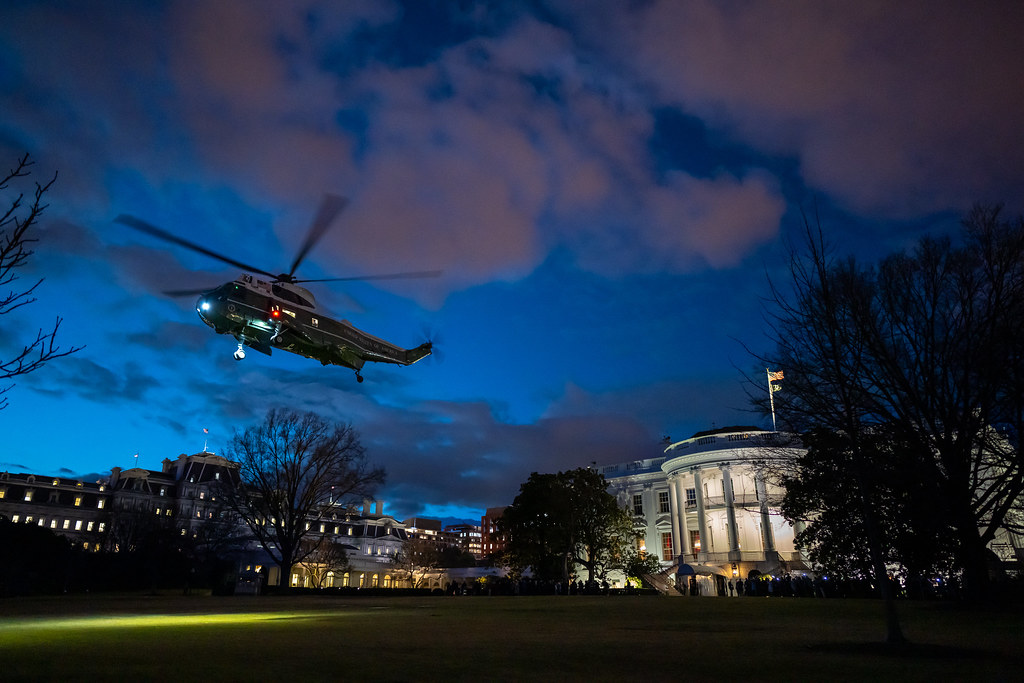
U.S. President Joe Biden departing the White House on Jan. 20. (White House, Carlos Fyfe)
By Medea Benjamin and Nicolas J. S. Davies
Common Dreams

 The Bulletin of the Atomic Scientists has just issued its 2023 Doomsday Clock statement, calling this “a time of unprecedented danger.”
The Bulletin of the Atomic Scientists has just issued its 2023 Doomsday Clock statement, calling this “a time of unprecedented danger.”
It has advanced the hands of the clock to 90 seconds to midnight, meaning that the world is closer to global catastrophe than ever before, mainly because the conflict in Ukraine has gravely increased the risk of nuclear war.
This scientific assessment should wake up the world’s leaders to the urgent necessity of bringing the parties involved in the Ukraine war to the peace table.
So far, the debate about peace talks to resolve the conflict has revolved mostly around what Ukraine and Russia should be prepared to bring to the table in order to end the war and restore peace.
However, given that this war is not just between Russia and Ukraine but is part of a “New Cold War” between Russia and the United States, it is not just Russia and Ukraine that must consider what they can bring to the table to end it.
The United States must also consider what steps it can take to resolve its underlying conflict with Russia that led to this war in the first place.
The geopolitical crisis that set the stage for the war in Ukraine began with NATO’s broken promises not to expand into Eastern Europe, and was exacerbated by its declaration in 2008 that Ukraine would eventually join this primarily anti-Russian military alliance.
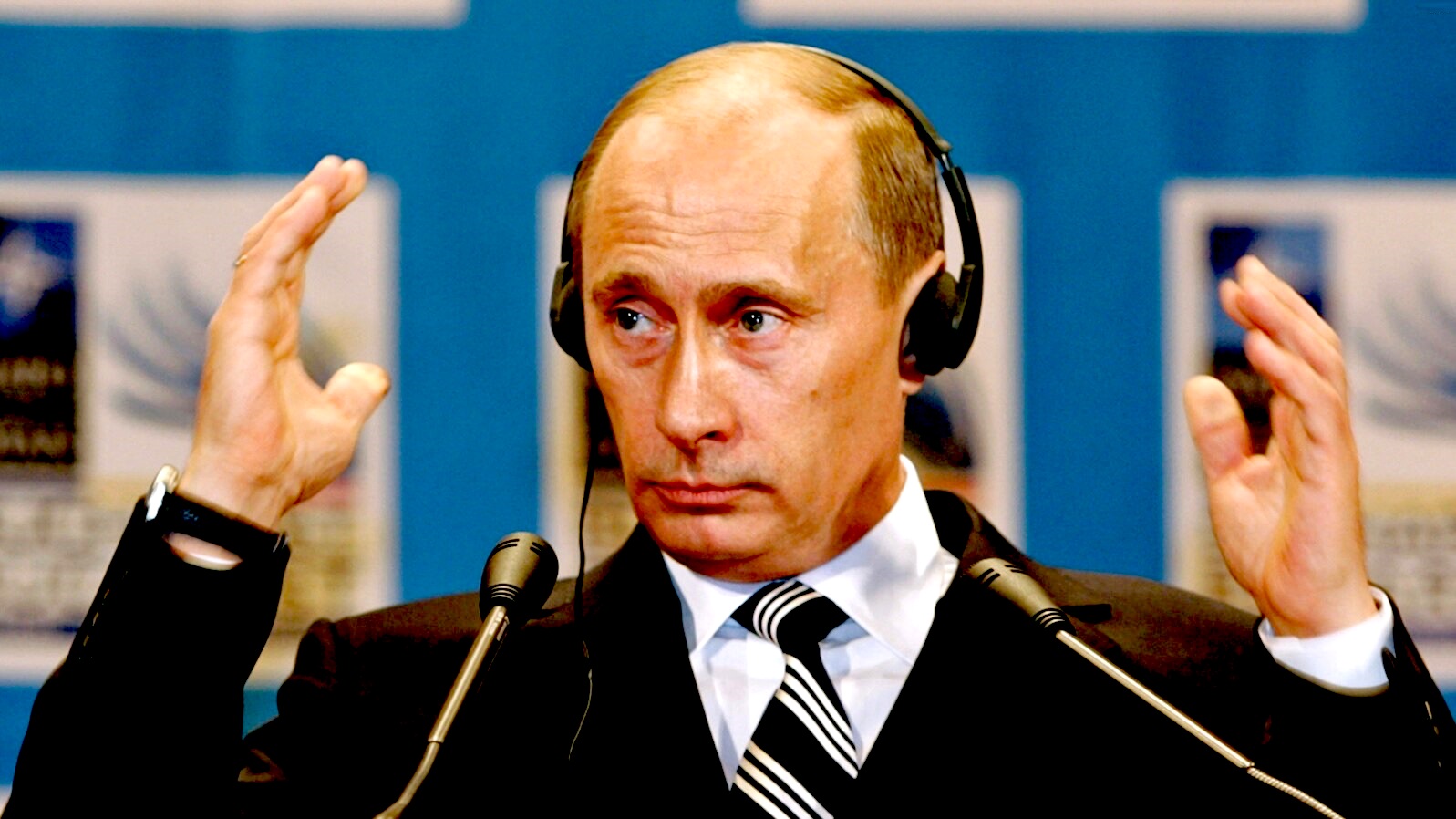
Vladimir Putin at an April 4, 2008, press-conference following the meeting of the Russia-NATO Council where he said NATO expansion would force Russia to respond by taking measures to protect its security. (Kremlin.ru, CC BY 4.0, Wikimedia Commons)
Then, in 2014, a U.S.-backed coup against Ukraine’s elected government caused the disintegration of Ukraine. Only 51 percent of Ukrainians surveyed told a Gallup poll that they recognized the legitimacy of the post-coup government, and large majorities in Crimea and in Donetsk and Luhansk provinces voted to secede from Ukraine.
Crimea rejoined Russia, and the new Ukrainian government launched a civil war against the self-declared “People’s Republics” of Donetsk and Luhansk.
The civil war killed an estimated 14,000 people, but the Minsk II accord in 2015 established a ceasefire and a buffer zone along the line of control, with 1,300 international OSCE ceasefire monitors and staff. The ceasefire line largely held for seven years, and casualties declined substantially from year to year.
But the Ukrainian government never resolved the underlying political crisis by granting Donetsk and Luhansk the autonomous status it promised them in the Minsk II agreement.
Now former German Chancellor Angela Merkel and French President Francois Hollande have admitted that Western leaders only agreed to the Minsk II accord to buy time, so that they could build up Ukraine’s armed forces to eventually recover Donetsk and Luhansk by force.
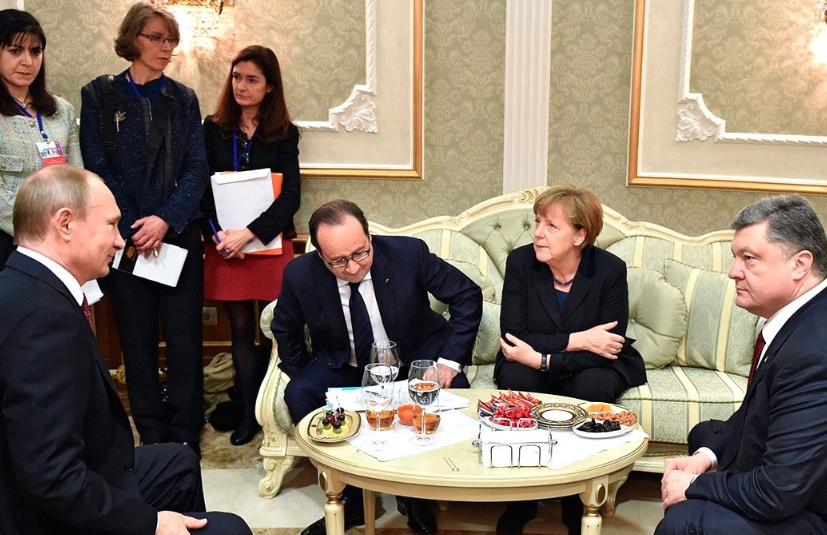
Feb. 12, 2015: Russian President Vladimir Putin, French President Francois Hollande, German Chancellor Angela Merkel, Ukrainian President Petro Poroshenko at the Normandy format talks in Minsk, Belarus. (Kremlin)
In March 2022, the month after the Russian invasion, ceasefire negotiations were held in Turkey. Russia and Ukraine drew up a 15-point “neutrality agreement,” which President Volodymyr Zelenskyy publicly presented and explained to his people in a national TV broadcast on March 27th.
Russia agreed to withdraw from the territories it had occupied since the invasion in February in exchange for a Ukrainian commitment not to join NATO or host foreign military bases. That framework also included proposals for resolving the future of Crimea and Donbas.
But in April, Ukraine’s Western allies — the United States and United Kingdom in particular — refused to support the neutrality agreement and persuaded Ukraine to abandon its negotiations with Russia.
U.S. and British officials said at the time that they saw a chance to “press” and“weaken” Russia and that they wanted to make the most of that opportunity.
The U.S. and British governments’ unfortunate decision to torpedo Ukraine’s neutrality agreement in the second month of the war has led to a prolonged and devastating conflict with hundreds of thousands of casualties.
Neither side can decisively defeat the other [so far], and every new escalation increases the danger of “a major war between NATO and Russia,” as NATO Secretary General Jens Stoltenberg recently warned.
U.S. and NATO leaders now claim to support a return to the negotiating table they upended in April, with the same goal of achieving a Russian withdrawal from territory it has occupied since February. They implicitly recognize that nine more months of unnecessary and bloody war have failed to greatly improve Ukraine’s negotiating position.
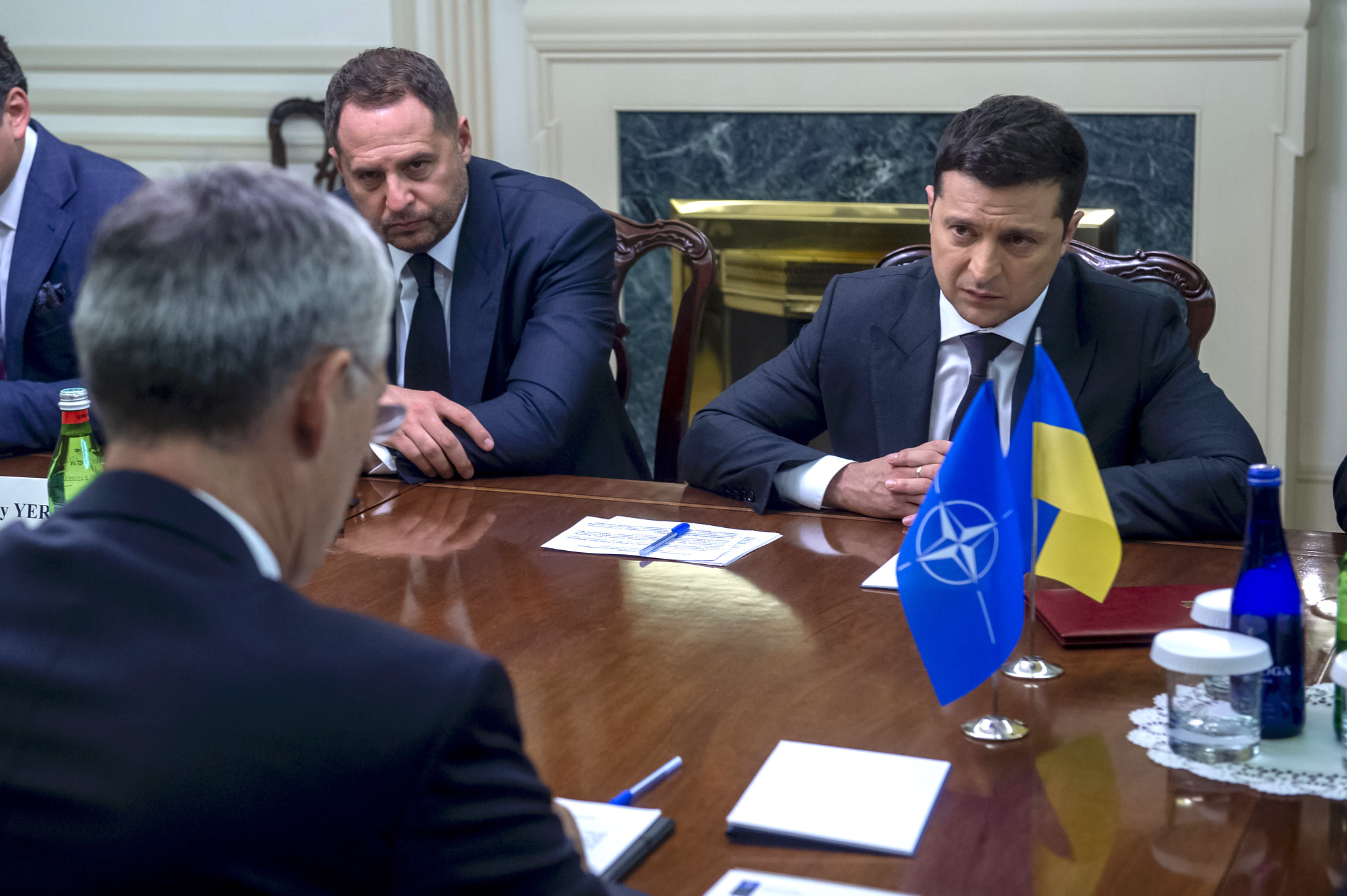
NATO Secretary General Jens Stoltenberg, back to camera, meeting with Ukraine’s President Volodymyr Zelensky in September 2021. (NATO)
Instead of just sending more weapons to fuel a war that cannot be won on the battlefield, Western leaders have a grave responsibility to help restart negotiations and ensure that they succeed this time.
Another diplomatic fiasco like the one they engineered in April would be a catastrophe for Ukraine and the world.
So what can the United States bring to the table to help move towards peace in Ukraine and to de-escalate its disastrous Cold War with Russia?
Like the Cuban Missile Crisis during the original Cold War, this crisis could serve as a catalyst for serious diplomacy to resolve the breakdown in U.S.-Russian relations.
Instead of risking nuclear annihilation in a bid to “weaken” Russia, the United States could instead use this crisis to open up a new era of nuclear arms control, disarmament treaties, and diplomatic engagement.
For years, President Vladimir Putin has complained about the large U.S. military footprint in Eastern and Central Europe. But in the wake of the Russian invasion of Ukraine, the U.S. has actually beefed up its European military presence.
It has increased the total deployments of American troops in Europe from 80,000 before February 2022 to roughly 100,000. It has sent warships to Spain, fighter jet squadrons to the United Kingdom, troops to Romania and the Baltics, and air defense systems to Germany and Italy.
Even before the Russian invasion, the U.S. began expanding its presence at a missile base in Romania that Russia has objected to ever since it went into operation in 2016. The U.S. military has also built what The New York Times called “a highly sensitive U.S. military installation” in Poland, just 100 miles from Russian territory.
The bases in Poland and Romania have sophisticated radars to track hostile missiles and interceptor missiles to shoot them down.
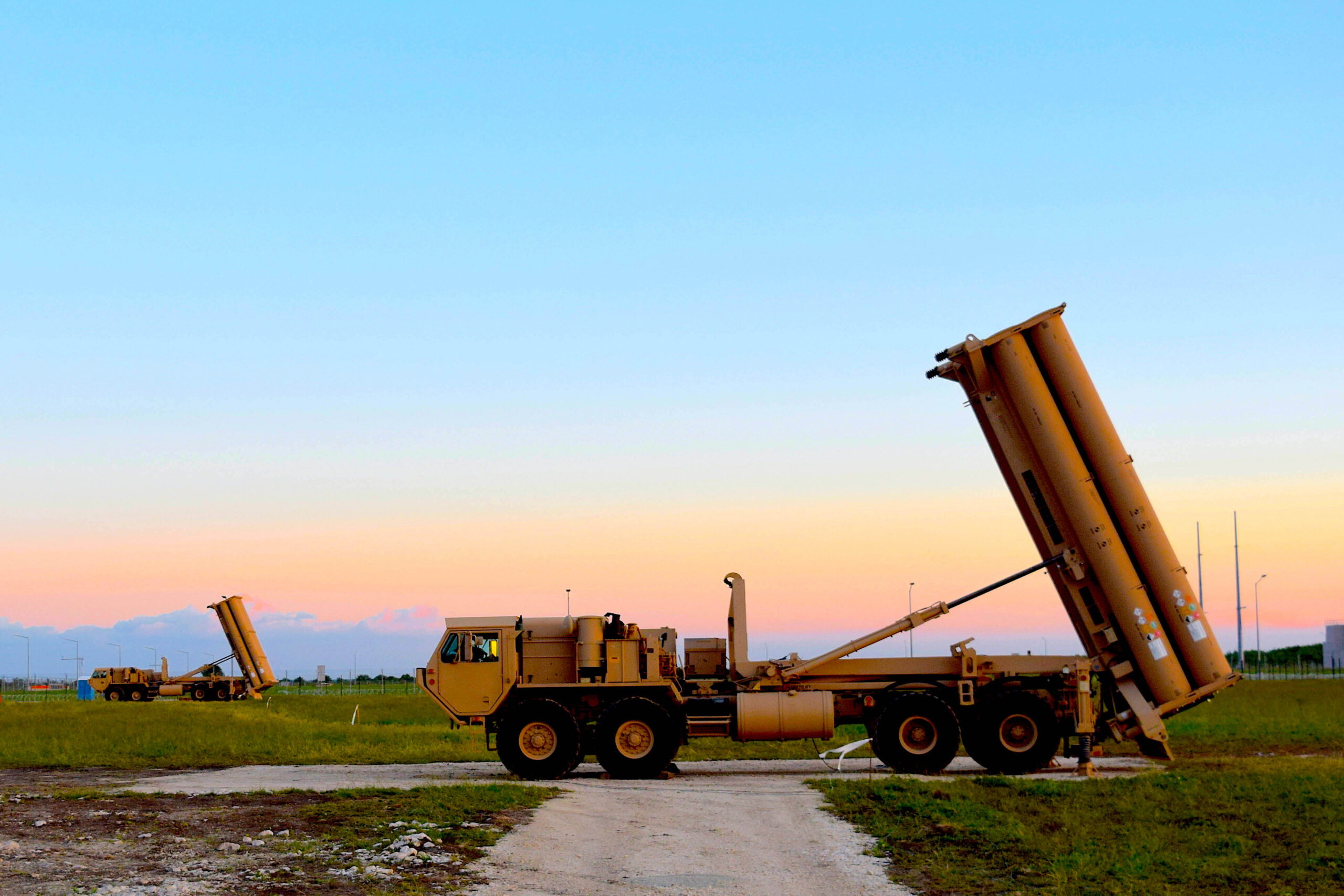
Sept. 1, 2019: U.S. Navy base in Deveselu, Romania, home to NATO’s Aegis Ashore Ballistic Missile Defense System site. (U.S. Navy, Amy Forsythe, Public domain)
The Russians worry that these installations can be repurposed to fire offensive or even nuclear missiles, and they are exactly what the 1972 ABM (Anti-Ballistic Missile) Treaty between the U.S. and the Soviet Union prohibited, until President George W. Bush withdrew from it in 2002.
While the Pentagon describes the two sites as defensive and pretends they are not directed at Russia, Putin has insisted that the bases are evidence of the threat posed by NATO’s eastward expansion.
Here are some steps the U.S. could consider putting on the table to start de-escalating these ever-rising tensions and improve the chances for a lasting ceasefire and peace agreement in Ukraine:
- The United States and other Western countries could support Ukrainian neutrality by agreeing to participate in the kind of security guarantees Ukraine and Russia agreed to in March, but which the U.S. and U.K. rejected.
- The U.S. and its NATO allies could let the Russians know at an early stage in negotiations that they are prepared to lift sanctions against Russia as part of a comprehensive peace agreement.
- The U.S. could agree to a significant reduction in the 100,000 troops it now has in Europe, and to removing its missiles from Romania and Poland and handing over those bases to their respective nations.
- The United States could commit to working with Russia on an agreement to resume mutual reductions in their nuclear arsenals, and to suspend both nations’ current plans to build even more dangerous weapons. They could also restore the Treaty on Open Skies, from which the United States withdrew in 2020, so that both sides can verify that the other is removing and dismantling the weapons they agree to eliminate.
- The United States could open a discussion on the removal of its nuclear weapons from the five European countries where they are presently deployed: Germany, Italy, the Netherlands, Belgium, and Turkey.
If the United States is willing to put these policy changes on the table in negotiations with Russia, it will make it easier for Russia and Ukraine to reach a mutually acceptable ceasefire agreement, and help to ensure that the peace they negotiate will be stable and lasting.
De-escalating the Cold War with Russia would give Russia a tangible gain to show its citizens as it retreats from Ukraine. It would also allow the United States to reduce its military spending and enable European countries to take charge of their own security, as most of their people want.
U.S.-Russia negotiations will not be easy, but a genuine commitment to resolve differences will create a new context in which each step can be taken with greater confidence as the peacemaking process builds its own momentum.
Most of the people of the world would breathe a sigh of relief to see progress towards ending the war in Ukraine, and to see the United States and Russia working together to reduce the existential dangers of their militarism and hostility.
This should lead to improved international cooperation on other serious crises facing the world in this century—and may even start to turn back the hands of the Doomsday Clock by making the world a safer place for us all.
Medea Benjamin, co-founder of Global Exchange and CODEPINK: Women for Peace, is the author of the 2018 book, Inside Iran: The Real History and Politics of the Islamic Republic of Iran. Her previous books include: Kingdom of the Unjust: Behind the U.S.-Saudi Connection(2016); Drone Warfare: Killing by Remote Control (2013); Don’t Be Afraid Gringo: A Honduran Woman Speaks from the Heart (1989) and, with Jodie Evans, Stop the Next War Now (Inner Ocean Action Guide) (2005).
Nicolas J. S. Daviesis an independent journalist, a researcher with CODEPINK and the author of Blood On Our Hands: the American Invasion and Destruction of Iraq.
The views expressed are solely those of the authors and may or may not reflect those of Consortium News.
Support CN’s
Winter Fund Drive!
Donate securely by credit card or check by clicking the red button:


I’d say “ONLY, the US can turn back the Doomsday Clock!”
I do not believe KD is pessimistic . I believe this is a realistic POV. I wonder what criteria gives you the assumption of a nuclear war within 3 generations. (Not that I disagree with your statement – just curious.)
What? Diplomacy? Give-and-take negotiations and compromise? As if the Russians have legitimate security concerns? Let’s not be shortsighted. Our leaders have done the cost/benefit calculation. Of what use is diplomacy when you consider that the U.S. could, possibly, dominate what remains of the world after nuclear exchanges?
One second to midnight. Or one second to midday. Makes no difference. Still, one second to annihilation thanks to the hubris and arrogance and madness of “homo plástico”.
There is a certain irony in the fact that the group that calls itself “The Woke” has slept-walked into nuclear Armageddon. And yes, the past tense of that sentence was deliberate. The Woke have not yet woken up to the reality of the World War that they have already triggered and begun, but their continued sleep will not protect them from the consequences.
Well, if there is a God, the good news is that she/he has a sense of humor. “The Woke” indeed. That was a good one, and not bad for a final joke as the curtain falls.
I believe the single greatest threat to a peaceful solution in Eastern Europe is the rigid ideological insularity currently ingrained in the Washington, DC establishment. Nowhere in Congress, in the bowels of the Pentagon, in Foggy Bottom, or out in Langley does there appear to be any appreciation or understanding for why Russia behaves as it does in Ukraine. Is this what mass formation psychosis looks like in practice?
Where are the likes of foreign policy heavyweights like John Mearsheimer or the late Stephen Cohen? Who in the US State Department, CIA, or Pentagon today is capable of articulating a single vital Russian strategic interest in Ukraine? An interest so important to Russia that that country might very well resort to nuclear weapons in order to defend it? Who in all of Washington, DC h as learned any historical lessons from Afghanistan? Libya? Vietnam? Sarajevo and the start up of WW I? Operation Barbarossa? The Crimean War? Napoleon’s 1812 invasion of Russia?
Conversely, what American now believes there is any vital strategic interest for this country in all of Eastern Europe, much less Ukraine? That is, an interest so vital as to risk a nuclear WW III with Russia over? A war that might result in the deaths of 20 to 30 million Americans here at home. If such an vital strategic interest does exist in Ukraine, then President Biden and our congress seem to have been greatly remiss in their explaining it to the rest of us. D*MN!
It couldn’t be clearer that the neocons are firmly in charge of foreign policy. The best explanation I’ve read of U.S. involvement in Ukraine is that the neocons have long feared that a cooperative German/Russian relationship would make the parties the indisputable economic juggernaut of Europe and, as such, an impediment to U.S. economic hegemony. Ergo, the proxy war to weaken Russia with the hope of dismembering the federation and, in the process, to alienate Russia from Germany in particular and Europe in general.
As to the Doomsday Clock, yes, to have the respected Bulletin of Atomic Scientists resetting it to 90 seconds to midnight should frighten the bejesus out of every member of our species. But the reset is a bit misleading in the sense that as long as nuclear arsenals exist, especially ICBMs that are launched on warning (because of use it or lose it) and cannot be recalled, the world is in reality one second to midnight. Madness.
None of this is getting through to Dem Party loyalists, is it? The Biden admin. spent the past two years alternating between senselessly provoking (nuclear world powers) Russia via Ukraine and China via Taiwan. Back and forth, one then the other. Since this would mean the end of the US, not to mention our deaths, can someone explain the absence of protest, of rage? Are they really so oblivious to all that is happening”?
Most people don’t understand the consequences of a nuclear exchange. They believe there is such a thing as “limited” or “tactical” nuclear war. There isn’t.
Of course there isn’t. This is “mythology” and “wishful thinking” on behalf of tptb and the acquiescence of the compliant proletariat.
I am sorry to say that the auther is hugely optimistic especially as far as the US is concerned. It wants world hegemeny as has been seen over and over. Any country that has tried to compete with US militarily, diplomatically or economically has been ostracized, sanctioned or provaked into a war with it. It has over 800 military bases throughout the world, a navy that is unsurpassed, an Air force and air defence that is among the best in the world. All this would be irrelevent if America truly wanted a peaceful world where countries could decide their own destinies. Unfortunately it is not. It seeks complete domination from the day it populated North America as was apparent when it slaughtered 15 million aboriginals. Unless things go drastically wrong for America it is well on it’s way to realising it’s dream. Who or what can stop them? Another asteroid in the Gulf of Mexico
KD – I very sadly have to strongly agree with your pessimistic POV. The authors make exceptionally good, rational humanistic points and prescriptions for world peace (and I for-one will continue to support these views at the polling place and through our local Peace Action group), but unfortunately they rely on political attitudes that are 99% ABSENT here in the US. If I was a betting man, I would bet on a major nuclear war within 3 generations at-best, which disgusts me to say that…